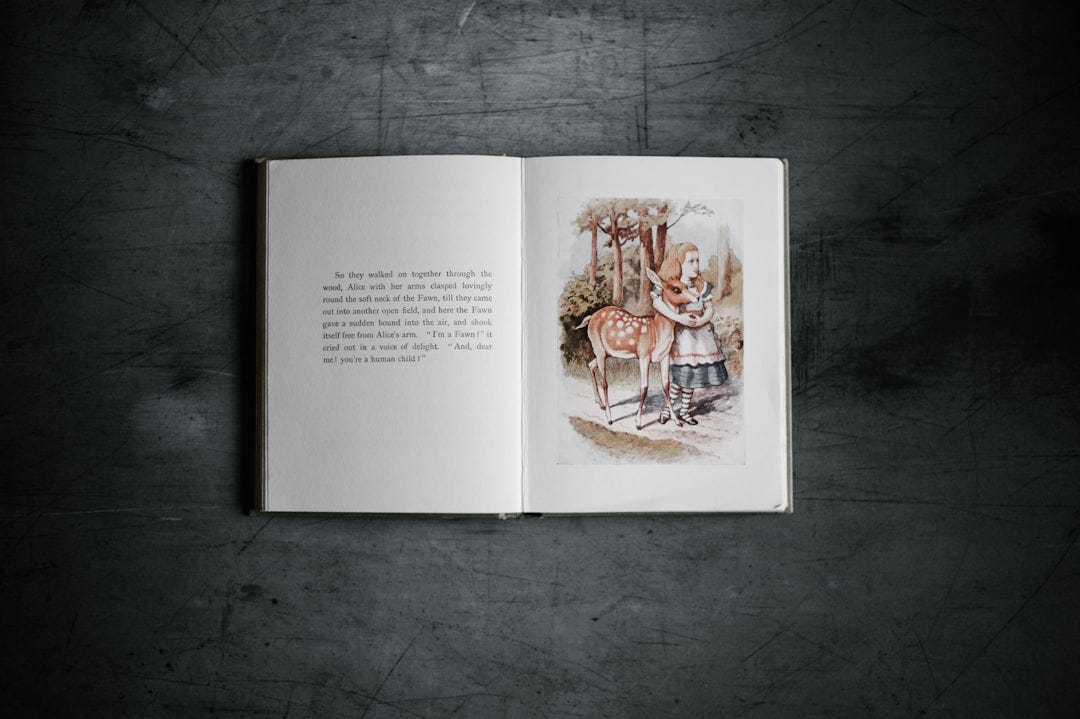The Secret To Unforgettable Stories.
What is anapestic meter and how it can elevate your stories.

A writer might sit at a desk and a chair, but the work they create wasn't meant to stay there.
We create to be remembered. If that weren’t the case, we’d write in our journals, close the covers, and tuck them away in our drawers, safe from sight. But when we capture the dreams swirling 'round in our heads, how do we make sure our words stick in the minds of those who read or hear our writing?
What if the secret to memorable writing lies in its rhythm?
Rhythm—it sounds lofty and grand, almost poetic. And while I don’t claim to be a master of verse, the word rhythm brings poetry to mind. And here’s the thing: I’ve found a gem in the technical side of poetry that helps make sentences stick in the reader’s mind.
Let me introduce you to anapestic meter. Stick with me through this quick technical lesson—I promise it’ll be worth your time.
Anapestic verse is known for its "rising rhythm," where the emphasis lands on the final beat of the foot: da-da-DUM. This pattern gives anapestic verse a light, nimble rhythm that evokes the galloping of a horse or the rolling of ocean waves.
da-da-DUM
It’s really practical when you spend time with it. Nearly any sentence can be reshaped to match the meter’s rhythm (stressed syllables in bold).
In the house on the hill, there’s a room full of light.
(da-da-DUM, da-da-DUM, da-da-DUM)With a hop and a skip, we dance through the park.
(da-da-DUM, da-da-DUM, da-da-DUM)In the blink of an eye, it was gone from my sight.
(da-da-DUM, da-da-DUM, da-da-DUM)
You can see this rhythm clearly in Byron's poem, "The Destruction of Sennacherib" (stressed syllables in bold):
The Assyrian came down like the wolf on the fold,
(da-da-DUM, da-da-DUM, da-da-DUM)And his cohorts were gleaming in purple and gold;
(da-da-DUM, da-da-DUM, da-da-DUM)And the sheen of their spears were like stars on the sea,
(da-da-DUM, da-da-DUM, da-da-DUM)When the blue wave rolls nightly on deep Galalee.
(da-da-DUM, da-da-DUM, da-da-DUM)
This poem is a famous example of anapestic meter because it captures the galloping rhythm of a horse and the rolling of waves—both common comparisons for this meter.
More familiar examples include:
The Night Before Christmas by Clement Clarke Moore: "'Twas the night before Christmas, when all through the house..."
Horton Hears A Who by Dr. Seuss: "On the fifteenth of May, in the jungle of Nool, In the heat of the day, in the cool of the pool..."
Hopefully, you can see how this meter works and how you feel like a surfer riding a wave as you read. The pronounced rhythmic quality of anapestic verse creates a singsongy cadence that our brain attaches to with memorization.

Photo by Annie Spratt on Unsplash
Why does this matter for Christian storytellers?
I found no instances of anapestic meter in the Bible's original Hebrew or Greek. This makes sense since it’s a technique developed much later for English poetry.
But that doesn’t mean we can’t use it effectively as Christian storytellers.
So, let's get practical. Anapestic meter, with its two unstressed syllables followed by a stressed one (da-da-DUM), creates a sense of movement or anticipation in your writing. This rhythm is particularly effective for crafting impactful taglines in Christian-themed stories or articles, such as:
"In the light of His love, we are saved by His grace."
(da-da-DUM da-da-DUM da-da-DUM da-da-DUM)
"With the cross on our backs, we are called to our knees."
(da-da-DUM da-da-DUM da-da-DUM da-da-DUM)
Preachers and devotional writers can incorporate anapestic rhythm in their spoken or written words to emphasize key points.
"In the depth of your pain, He is there by your side" is far more memorable than "God is with you in the depth of your pain."
You might not have been able to articulate why until today. I was the same way before discovering this little gift from English poetry. Snaps for English poetry.
All of this makes sense when you reflect on God.
Rhythmic patterns in writing mirror the order and structure found in God’s creation. Just as the universe has rhythms and patterns—day and night, fall and spring—our writing can echo this divine order through intentional meter and rhythm.
This week, spend a little more time making your words more memorable. Maybe through an anapestic meter or something else I haven’t discovered yet.
LAST WEEK’S STORIES
Last week I introduced the Pixar Animation “story spine.” It’s a 6-part writing framework they use to structure all their stories. Nate gave the framework a try and shared it with me on X.
Once upon a time, a valiant knight named Garin was on a quest to secure the king’s land. Every day, he fought outlaws, seeking to honor God and country. One day, along the way he found an injured priest in ransacked village. The priest told him that the villagers had been deceived and kidnapped by unearthly monsters. Because of that, Garin accepted the noble quest of saving the villagers. He discovered a mysterious opening, called the Path to Darkness, where the evil monsters were entering the land. Garin bravely entered and discovered a labyrinth of darkness within. He battled the monsters with faith and shield, freeing every villager along the way. Until finally, upon returning to the land, Garin destroyed the Path to Darkness, securing the land.
🄰🄲🄿_Nate - Making Games and Comics, @AwesomeCombo
As always, send your stories by simply replying to this email or tagging me on X (@thepaytonminz). Let me know if you’d prefer to remain anonymous.
Writing Prompt: Create a scene where a character has a breakthrough moment, using anapestic meter to convey their realization. Let the rhythm add a sense of movement and anticipation to their epiphany.
Write on 🤙
Payton


